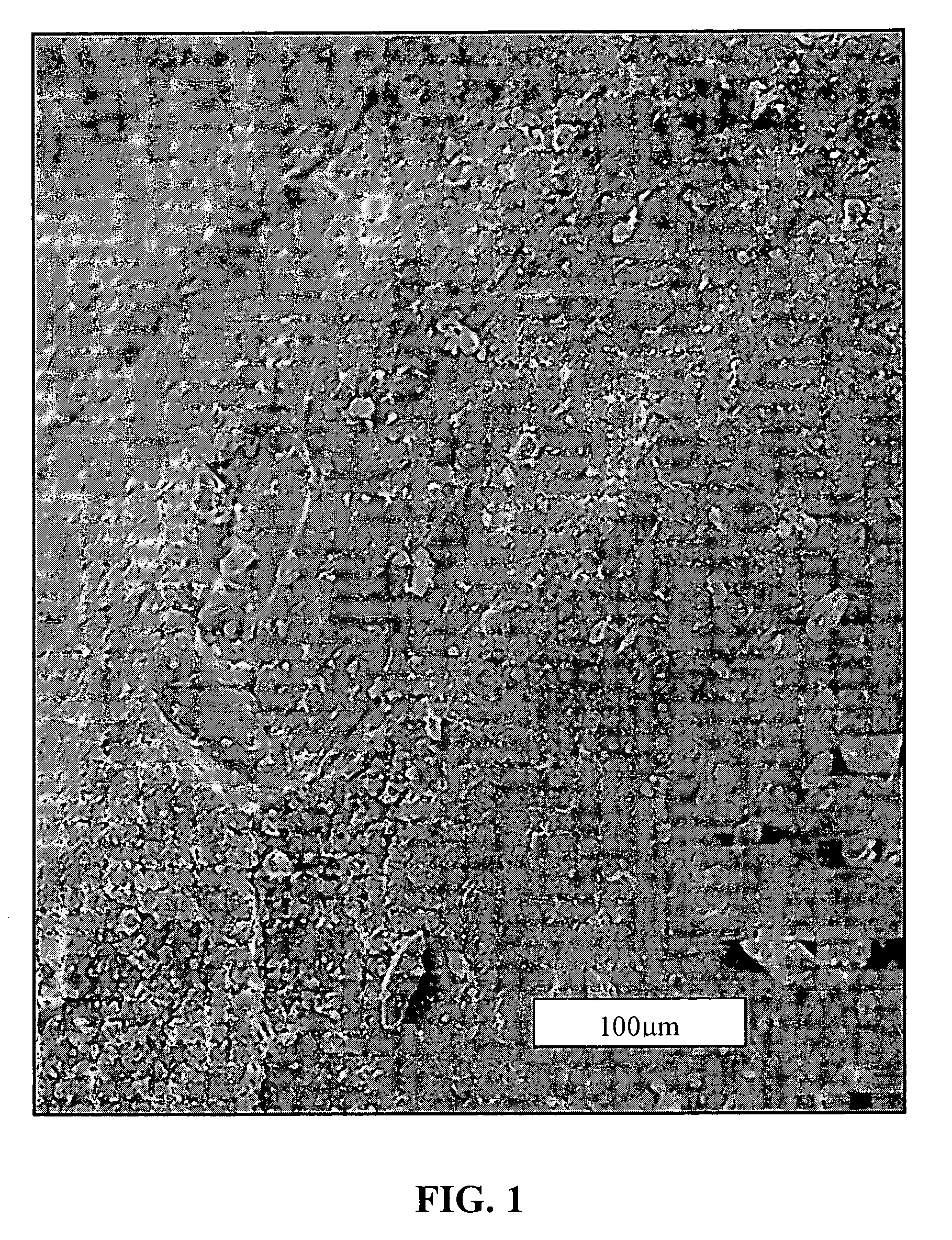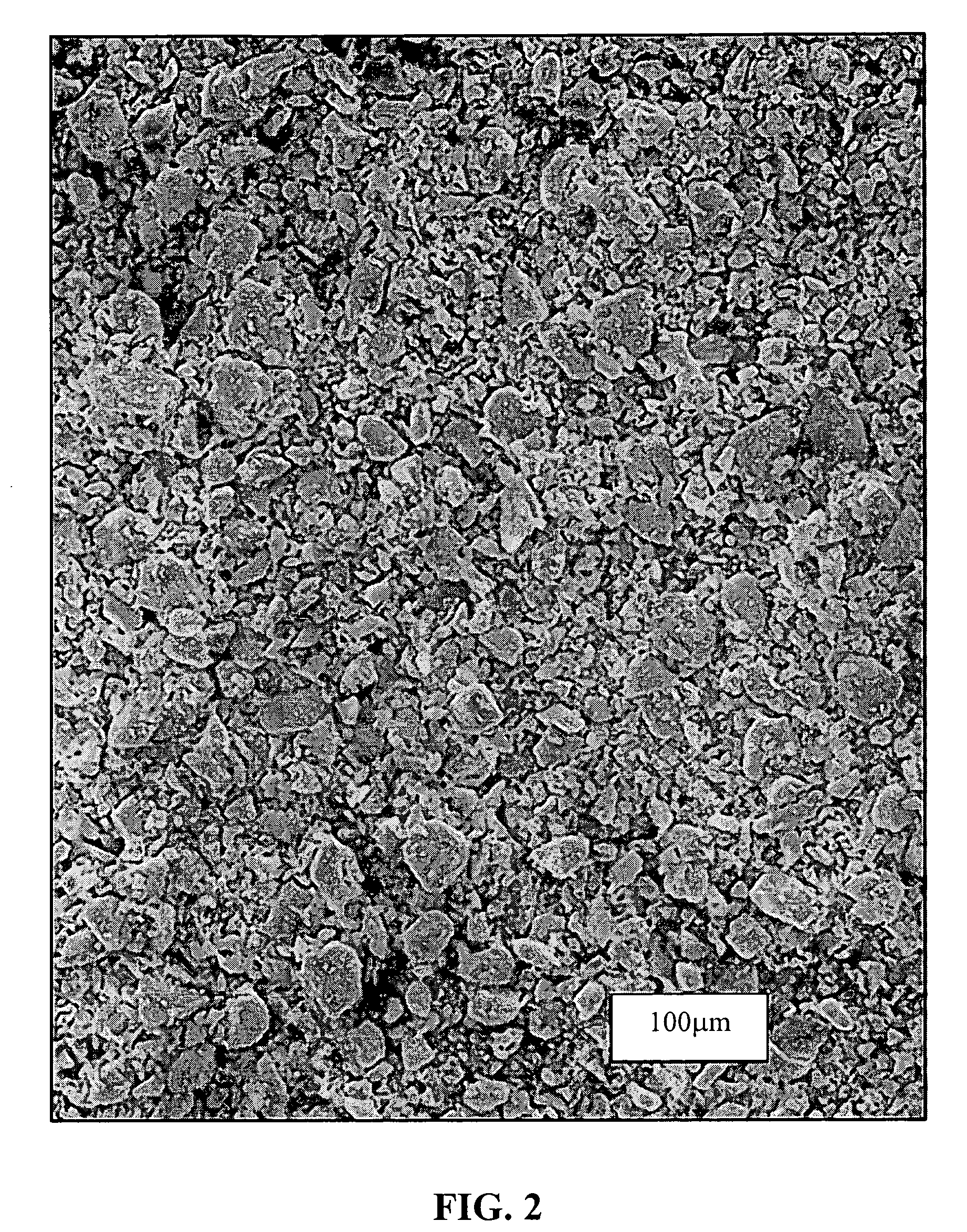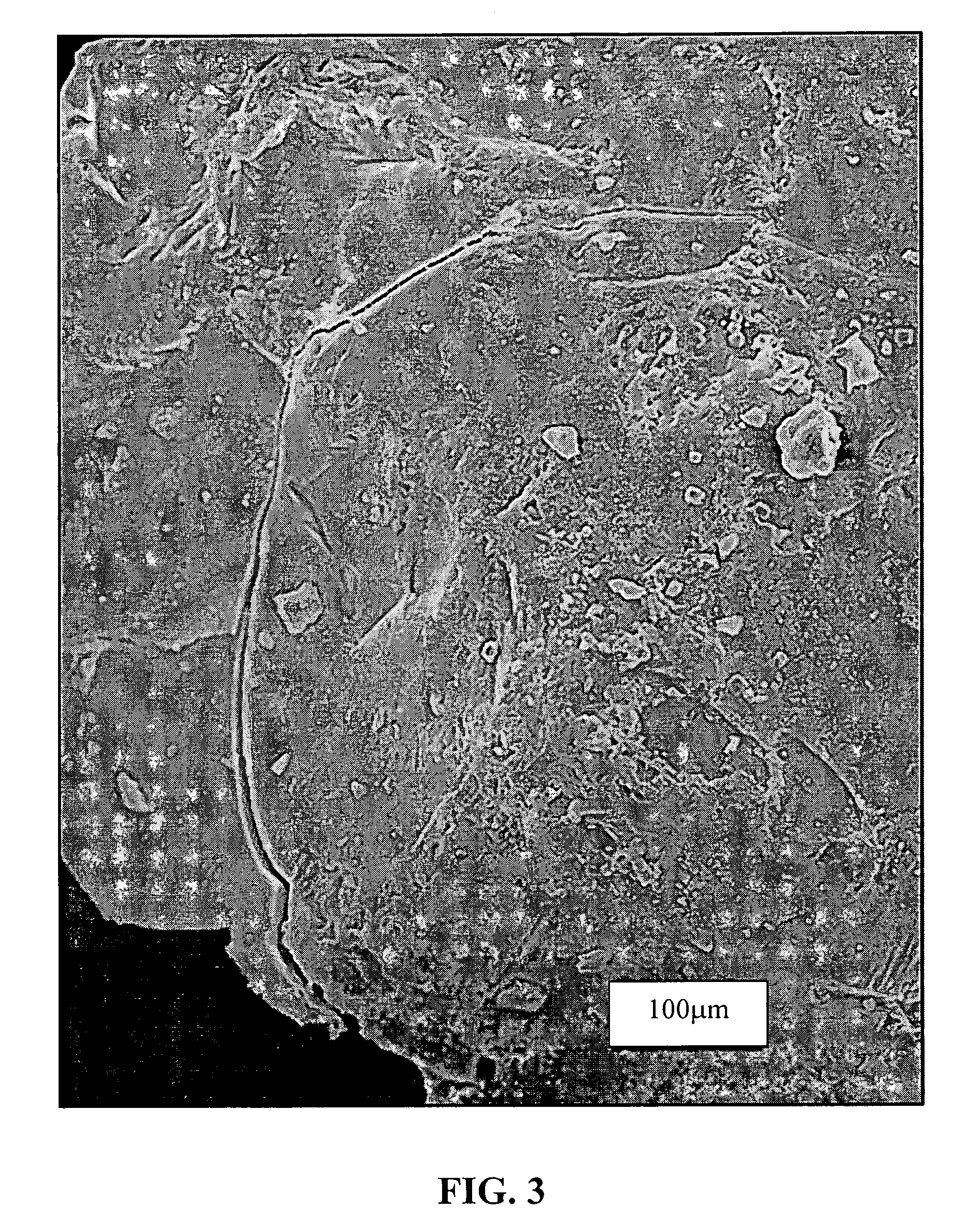Transition metal oxide-aluminosilicate purification media
a technology of aluminum oxide and purification media, which is applied in the direction of physical/chemical process catalysts, other chemical processes, separation processes, etc., can solve the problems of air and water being frequently contaminated, microorganisms such as bacteria and virii, are difficult to remove from fluids, etc., and achieves the effect of reducing the activity of the medium, rapid removal, and prolonging the service li
- Summary
- Abstract
- Description
- Claims
- Application Information
AI Technical Summary
Benefits of technology
Problems solved by technology
Method used
Image
Examples
example 1
Preparation of Composition
[0051]Eight pounds alumina hydrate was added to approximately 1 gallon sodium hydroxide, 50% solution. It was cooked 0.5 hour at 120-300° F., average 150° until the alumina hydrate was dissolved. The slurry was mixed with sodium silicate containing 4% titanium dioxide having an average particle size of 20-100 nm. The volume of sodium silicate mixed was 5.75 gallons, then mixed for 60 seconds at 600 rpm, and put on a curing bed and exposed to UV light for 5 to 7 days. The resulting material was placed in a ceramic tray and heated to 500° C. for 7 hours.
[0052]Sample particles of the resulting composition were imaged using scanning electron microscopy (SEM) to illustrate surface topography of the material. Photomicrographs of this material are provided in FIGS. 1, 4, 9, 14, and 19.
[0053]Energy dispersive x-ray spectroscopy (EDX) was performed on this material, and the results presented in FIG. 21. The absence of a strong peak for titanium, together with the ab...
example 2
Preparation of Composition
[0054]The process described above in Example 1 was followed, except that the material was not heated to 500° C.
[0055]Sample particles of the resulting composition were imaged using SEM to illustrate surface topography of the material. Photomicrographs of this material are provided in FIGS. 2, 5, 7, 8, 11, 12, 16, 17, and 20.
[0056]EDX was performed on samples of this material, and the results presented in FIG. 22 and FIG. 23. Conclusions similar to those described in Example 1 can be drawn with respect to the material of Example 2.
example 3
Organic Material Reduction
[0060]2.5 g of the material of Example 1 was added to a beaker, and 100 ml deionized water was added to the material. 0.8 ml of violet dye Aldrich Crystal Violet, 548-62-9, which corresponds to about 800 ppm of organic impurity, was added to the water, and left in fluorescent light at room temperature. After 0.1 hours, no purple dye was visible in the water.
PUM
| Property | Measurement | Unit |
|---|---|---|
| Temperature | aaaaa | aaaaa |
| Time | aaaaa | aaaaa |
| Time | aaaaa | aaaaa |
Abstract
Description
Claims
Application Information
 Login to View More
Login to View More - R&D
- Intellectual Property
- Life Sciences
- Materials
- Tech Scout
- Unparalleled Data Quality
- Higher Quality Content
- 60% Fewer Hallucinations
Browse by: Latest US Patents, China's latest patents, Technical Efficacy Thesaurus, Application Domain, Technology Topic, Popular Technical Reports.
© 2025 PatSnap. All rights reserved.Legal|Privacy policy|Modern Slavery Act Transparency Statement|Sitemap|About US| Contact US: help@patsnap.com



